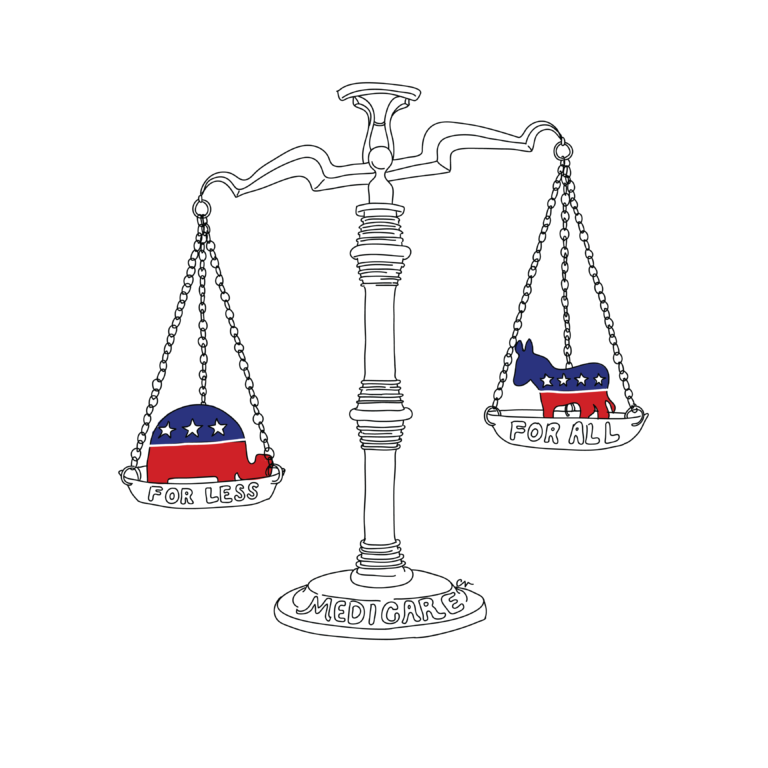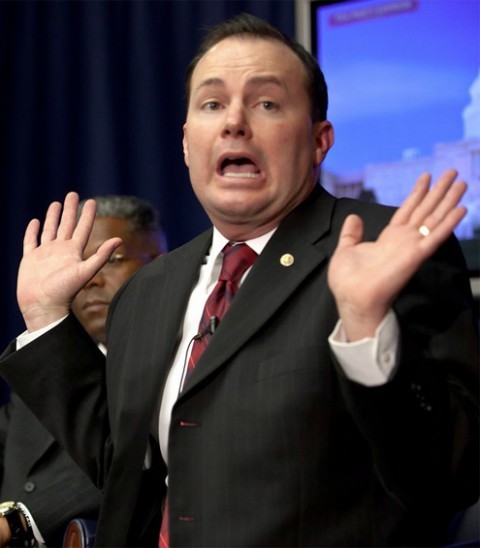Photo courtesy of Vox.com.
The COVID-19 crisis has seemingly brought the entire United States to a standstill. Social distancing and stay-at-home orders have led many businesses to shut down and countless events to be canceled or postponed. Even elections are not exempt from the crisis.
Several states and territories including Ohio, New York, and Georgia have pushed their March and April primary elections dates to May or June due to fears of COVID-19. Already, there have been fears and rumors that the presidential election in November could also be postponed by the President. This cannot be done by executive order and would require a change in the federal law that requires the presidential election to occur on the first Tuesday after November 1st. The Constitution also mandates the new Congress and President-elect’s terms begin on January 3rd and 20th respectively. However, if COVID-19 were to reemerge around the time of Election Day, state governments would need a way to hold elections while preventing another outbreak. That way could be vote-by-mail elections.
Traditionally, voting in an election requires a person to go to their assigned polling station and fill out a secret ballot inside a polling booth. This process can lead to tremendously long lines and a person waiting for hours to vote. If a person is unable to vote in person, they can request an absentee ballot to fill out and mail to their state or local board of elections. However, some states limit absentee ballots to those who are sick, traveling, or military service members. A vote-by-mail election changes all of this.
In a vote-by-mail election, a ballot is mailed out to a person’s address usually around three weeks before an election. They can simply fill out the ballot from the comfort of their own home and mail it back with postage paid to the board of elections as long as it is postmarked by Election Day. They can also drop off their mail ballots at officially designated drop-off locations. For people who are homeless, ballots could be made available to be picked up at local post offices.
Elections in Colorado, Washington, and Oregon are already entirely vote-by-mail and 28 states and D.C. already allow absentee ballots to be cast without an excuse. In these states and the counties that have shifted to vote-by-mail, turnout has increased across the board. According to the Pew Research Center, who analyzed Colorado’s switch to vote-by-mail, the overall costs of elections decreased and an overwhelming majority of voters expressed they were satisfied or very satisfied with vote-by-mail. Oregon, the first state to establish vote-by-mail elections, has been running elections without problem since it was enacted in 1998. The state had 68 percent of its registered voters vote in the 2016 election–8 percent higher than the national average. In the 2014 midterm elections, they had double the amount of voters under 34 who cast a ballot compared to other states. Since vote-by-mail only requires paper ballots (the most secure way to run elections according to experts), there is no need to worry about election machines being hacked and Oregon election officials regularly update voter rolls to remove deceased voters and note address changes.
Pictured: An Oregon voter drops off her ballot in a designated drop box.
Photo courtesy of OPB.org.
Yet, vote-by-mail elections are still not without their criticisms. Many fear of votes getting lost in the mail and, in particular, election fraud. In the 2018 election for North Carolina’s 9th congressional district, a Republican campaign operative was suspected of absentee ballot fraud by illegal ballot harvesting. This refers to the practice of a volunteer collecting ballots from voters and turning them in on their behalf. Some states like Arizona limit this practice by only allowing family members to collect ballots or limit the number of ballots that can be collected. While voting-by-mail has higher chances of fraud than in-person voting, election fraud is very rare in the United States and could be prevented by better security methods.
Election results can also take days or even weeks to count. This was evident in the 2020 Democratic primary where Bernie Sanders and Joe Biden were declared winners of California and Washington respectfully about a week after polls had closed in those states. The long counting process, however, ensures that minimum mistakes are made and every vote is counted. Turning Election Day into Election Week can also allow ballots that were mailed in late to be counted in the election.
It is important to note that all federal elections are run at the state level. States would have to change their own laws to allow vote-by-mail. However, many states do not have the adequate infrastructure nor the money to hold elections entirely by mail, so Congress must act now to appropriate the necessary funds to states so they can be ready in time for November. Since 2007, Senator Ron Wyden from Oregon has proposed legislation to help establish nationwide vote-by-mail elections. Speaker of the House Nancy Pelosi has also expressed support for vote-by-mail elections and called for $4 billion to be given to states to help enact them in her $2.5 trillion stimulus proposal to lessen the economic effects of COVID-19. The final $2 trillion stimulus bill that was signed into law by President Donald Trump last week only gives states $400 million for election security. This is not nearly enough to fund what is sure to be a transformative process for election officials and voters alike.
Voting-by-mail will ensure that the November elections can run smoothly without causing another potential outbreak of COVID-19 and without decreasing turnout. In fact, it can even increase turnout. All members of Congress should be called upon by their constituents to support and pass legislation funding vote-by-mail elections. American democracy and the safety of all Americans could depend on it.



